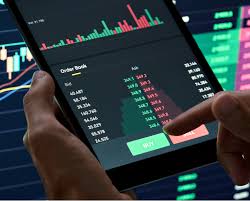
Crypto Margin Trading: An Overview
In recent years, the world of cryptocurrency has taken the financial landscape by storm, providing new avenues for investment and trading. One of the more complex yet intriguing methods of trading in the crypto market is Crypto Margin Trading. Crypto Margin Trading click here to delve deeper into the nuances of this trading strategy and understand what makes it a preferred choice among many traders.
What is Crypto Margin Trading?
Crypto Margin Trading is a method of trading where traders borrow funds to trade larger positions than they could with their own capital alone. Essentially, it allows traders to leverage their positions, amplifying both potential profits and risks. Margin trading has become increasingly popular among cryptocurrency traders looking to exploit market volatility for profit.
How Does Margin Trading Work?
In margin trading, you deposit a percentage of the total trade value, known as the margin, to open a position. This allows you to borrow the remainder of the funds necessary to execute the trade. For instance, if you want to trade $1,000 worth of Bitcoin and your exchange allows for a 10x leverage, you would only need to deposit $100. The remaining $900 would be borrowed from the exchange or broker.

The basic formula for margin trading can be described as follows:
- Leverage: The multiple of your margin that you can borrow. For instance, 10x leverage means borrowing 10 times your margin.
- Margin: The amount of capital you are putting up for the trade.
- Position Size: The total size of your trade, which is the sum of your margin and the borrowed amount.
Benefits of Crypto Margin Trading
There are several benefits associated with margin trading, including:
- Increased Potential Profits: By using leverage, traders can significantly enhance their potential returns on investment, given that market movements favor their positions.
- Flexibility: Margin trading offers traders the ability to adjust their positions quickly in response to market changes, which can be crucial in the volatile crypto market.
- Hedging Options: Margin trading allows traders to hedge their positions more effectively by opening short positions to mitigate risks associated with adverse market movements.
Risks of Crypto Margin Trading
Despite its advantages, margin trading also comes with significant risks:
- Liquidation Risk: If the market moves against your position and your losses exceed your margin, your position may be liquidated by the exchange, resulting in a total loss of your investment.
- Psychological Stress: The influence of leverage can lead to heightened emotions, which might result in hasty decisions and increased trading errors.
- Market Volatility: The crypto market is known for its volatility, which can amplify both wins and losses in margin trading scenarios.

Strategies for Successful Margin Trading
To navigate the complexities of margin trading effectively, consider the following strategies:
- Use Stop-Loss Orders: Implementing stop-loss orders is a prudent strategy to minimize potential losses on your trades. By setting a predetermined price at which your position will close, you can limit the impact of adverse market movements.
- Maintain a Risk-Reward Ratio: Always analyze trades to ensure that the potential reward outweighs the risks involved. A common strategy is to aim for a minimum 2:1 risk-reward ratio.
- Stay Updated: The crypto market is subject to rapid changes. Regularly update yourself on market news, technology advancements, and economic factors that can influence trading outcomes.
- Practice with a Demo Account: Many trading platforms offer demo accounts where you can practice margin trading without risking real money. This can help build confidence and improve your strategies.
Choosing the Right Margin Trading Platform
Selecting a reputable margin trading platform is crucial for your trading experience. Look for platforms that offer fair leverage options, robust security measures, and a user-friendly interface. Key factors to consider include:
- Reputation: Research the platform’s history, user reviews, and regulatory compliance to ensure you are trading with a trustworthy provider.
- Fees: Be aware of trading fees, such as margin interest rates and withdrawal fees, that might impact your overall profitability.
- Customer Support: Efficient customer support is essential, especially if you encounter any issues while trading. Look for platforms that offer responsive and reliable support services.
Conclusion
Crypto Margin Trading can be a powerful tool for traders looking to maximize their returns in the volatile cryptocurrency market. However, it is essential to understand both the potential rewards and inherent risks. By implementing effective strategies, conducting thorough research, and maintaining discipline, traders can navigate the complexities of margin trading successfully. Always remember to start with a clear plan and consider your risk tolerance before diving into leveraged trades.
